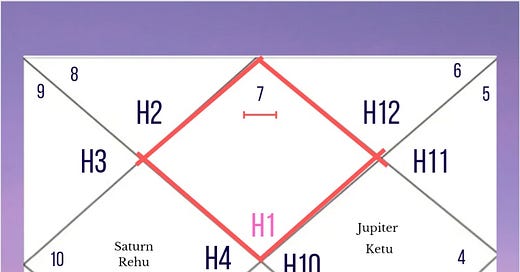the astrological stand off: western vs. vedic astrology
A deep(er) dive into the difference between western (tropical) astrology & vedic (sidereal) astrology with chart examples & explanations for the astro-curious!
hey, star people. welcome to this post on how to interpret western & vedic astrology charts! if you've ever been curious about the key differences between these two astrological systems, you're in the right place. we'll dive deep into the nuances and provide chart examples and explanations to help you make sense of it all. so grab a cup of tea, sit back, and let's explore the fascinating world of astrology!
but first a caveat: i am not a vedic astrologer. i am astro curious though so receptive to learning about other astrological systems outside of the one i know, use & love.
end of psa.
SOME VEDIC ASTROLOGY FACTS + A BIT OF HISTORY
first off, a bit of history!
vedic astrology is a tradition that emerged out of india & the east. it is sometimes called by the sanskrit word, jyotisa (from jyoti which means ‘light’). jyotisa is the sacred art & science of the lights in the sky & the awareness of the light within.
vedic astrology has been practiced for at least 5,000 years. it is usually handed down via word of mouth within families. those that practiced vedic astrology were expert astronomers & awakened mystics. the originator of vedic astrology was parasara muni whose lineage includes their teachers, brahma & narada (two celestrial personages who prominently figure into vedic lore). vedic astrology is used to plan events such as weddings & wars (in the past), to name a few.
Keep reading with a 7-day free trial
Subscribe to outlaw astrology's the daily stargazer to keep reading this post and get 7 days of free access to the full post archives.




